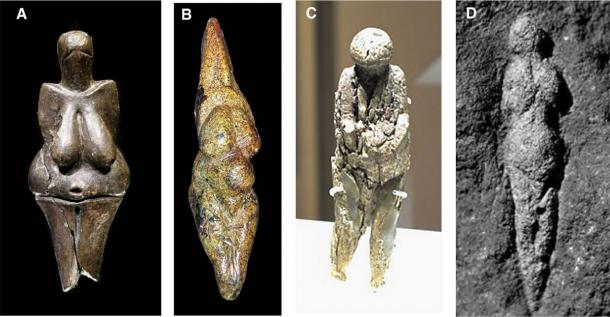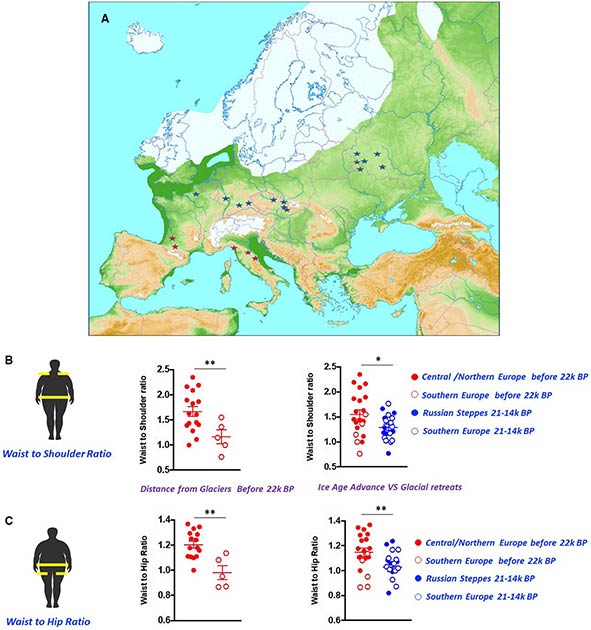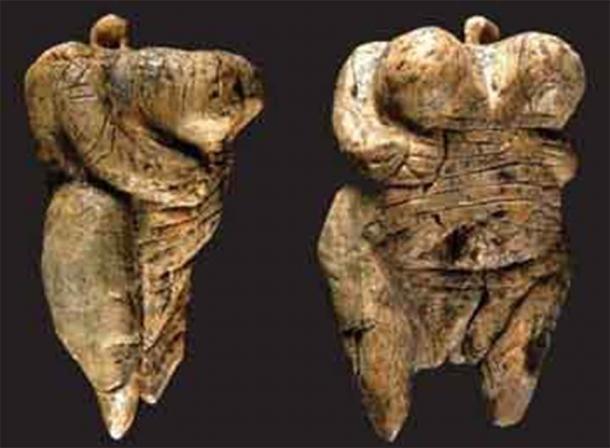While we all know too much icing can lead to obesity, a new study now says too much “Ice Age” can too, linking the famous Ice Age Venus figurines with a widespread prehistoric desire for “female obesity.”
According to a 2019 Lab Blog article, “ Fat shaming ” won’t solve the world’s obesity epidemic, and the World Health Organization says the condition affects more than “1.9 billion people worldwide.” However, a team of University of Colorado Anschutz Medical Campus researchers has published a new theory in the journal, Obesity, suggesting the Ice Age Venus figurines relate not only to a changing climate, but also to a desire for “female obesity.”
The famous figurines were carved around 30,000 years ago and represent the oldest carved human forms ever discovered, but their exact meaning has eluded scientists for nearly two centuries. It is generally agreed that these ancient works of art depict either pregnant or obese women and they have always been associated with beliefs pertaining to human female fertility . However, according to Richard Johnson, MD, lead author of the new study, these oversized ancient females hold the “key to understanding climate change and diet.”

Ice Age Venus figurines from Europe and the steppes of Russia (38,000 to 14,000 BP). (A) Venus of Dolni Vestonice, Czech, 26,000 BP. (B) Venus of Savignano, Italy, 24,000‐23,000 BP. (C) Venus of Zaraysk, Russia, 19,000 BP. (D) Venus of Abri Pataud, France, 21,000 BP. (Johnson, R.J., Lanaspa, M.A. & J.W. Fox, 2020/ Obesity)
More Icing for Prehistoric Obesity
The statuettes were created by Ice Age hunter gatherers, but according to Dr. Johnson at this time “you would not expect to see obesity at all” because people were enduring “extreme nutritional stress.” In other words, the terrible weather meant most folks were most often starving. Around 48,000 years ago early human hunters known as “ Aurignacians” hunted reindeer, horses, and mammoths with bone-tipped spears, and during the winters they survived on diets of berries, fish, nuts, and plants. But around 40,000 years ago temperatures began dropping and everything changed.
Mile-deep ice sheets advanced over what is today Northern Europe, causing winter temperatures to plunge to 10-15 degrees Celsius (50-59 degrees Fahrenheit). This killed off may hunters and forced other groups to retreat southwards to the central European forests. It was during this battle with the ice giants of the north that the Venus figurines were crafted and the researchers think this was no coincidence.
Taking the Measurements of the Ice Age Figurines
Measuring between 6 and 16 centimeters (2.36 – 6.30 inches) in length, these types of carved figures were generally crafted from stone, ivory, horn or clay and the new paper says some of the smaller examples were drilled with holes so that they could be worn as amulets. The team of scientists measured the waist-to-hip and waist-to-shoulder ratios of each Venus figurine and discovered those that were found closest to the glaciers were “the most obese, compared with those located further away.”

Venus figurine locations related to the glaciers. (A) Map shows Weichselian advance of the Last Glacial Maximum (circa 22,000 BP). Shown are sites (stars) where Venuses were found (38,000 to 22,000 BP). Close to the glacier are the clusters of Venuses, including Northern Europe and Russia (blue stars) while Venus figurines more distant from the glaciers are present in southern Europe (Italy, France, and Spain) (red stars). (B) Waist to shoulder ratio in figurines during the Ice Age (< 22,000 BP; red symbols) and after the glacial era (21,000 to 14,000 BP; blue symbols). Relative areas to the glaciers are illustrated as solid (close) or clear (distant). ( C) Waist to hip ratio in figurines during the Ice Age (< 22,000 BP; red symbols) and after the glacial era (21,000 to 14,000 BP; blue symbols). Relative areas to the glaciers are depicted as solid (close) or clear (distant). (Johnson, R.J., Lanaspa, M.A. & J.W. Fox, 2020/ Obesity)
Trying to explain this finding, the researchers say the Ice Age Venuses represented “ an idealized body type for these difficult living conditions” and they suggest the carved figures conveyed ideals of body size for young women, and especially those who lived in proximity to glaciers, wrote Johnson. The study determined that body size proportions were highest at the time the glaciers advanced, whereas obesity decreased when the climate warmed and glaciers retreated.

Venus of Hohle Fels. ( Fair Use )
Obesity Was the Old World Ideal
Concluding that the obese figurines conveyed “ideals of body size, for young women,” the researchers claim being what is now deemed overweight was a “desired condition.” This was because obese females could carry a child through pregnancy in times of need more successfully than a woman suffering from malnutrition. Expanding on this, the researchers say many of the figurines are well-worn and they think this means they were heirlooms passed down from mother to daughter through generations.
The paper suggests young women becoming fertile, or pregnant, may have been given a Venus figurine in the hopes that they would achieve a similar body mass to increase the chances of a successful birth. With this magical aspect in mind, it is also suggested that the figurines may have been “imbued with a spiritual meaning – a fetish or magical charm of sorts that could protect a woman through pregnancy, birth and nursing .”
The desire for obesity in prehistoric societies was a key factor in the success of the tribe, and the need for fertile, healthy mothers, able to withstand the challenges of natural disasters and famines, was essential in these times of dramatic climatic upheaval. Johnson concluded that the Ice Age Venus figurines emerged as “an ideological tool to help improve fertility and survival of the mother and newborns,” promoting health and survival.
Top Image: The Venus of Willendorf. Does she represent a wish for obesity during the Ice Age? Source: CC BY SA 4.0
By Ashley Cowie
Related posts:
Views: 0
 RSS Feed
RSS Feed
















 December 3rd, 2020
December 3rd, 2020  Awake Goy
Awake Goy  Posted in
Posted in  Tags:
Tags: 
















